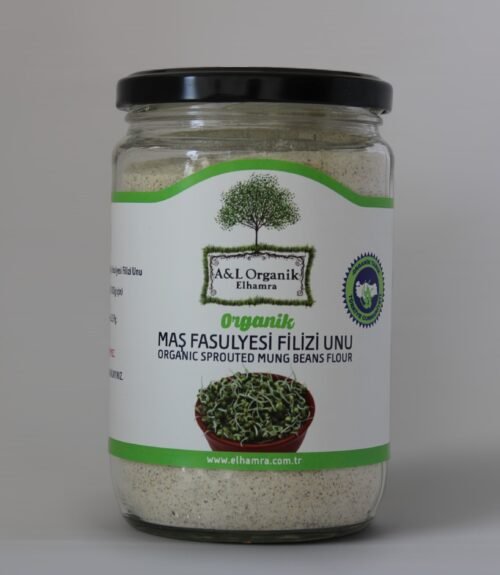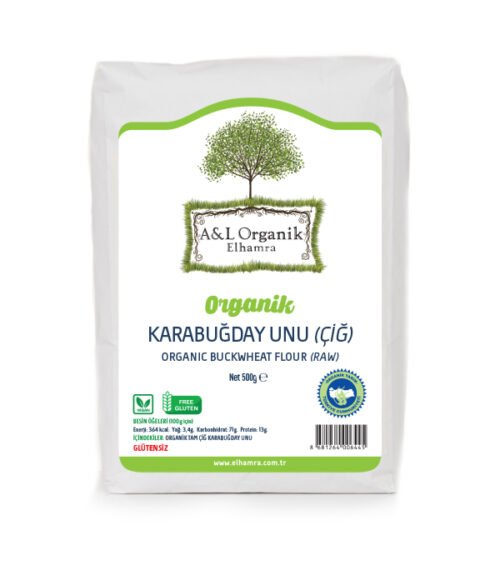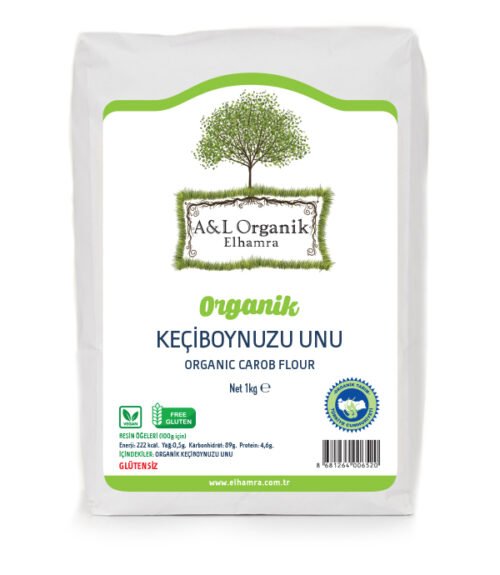ORGANIC WHEAT FLOUR. WHOLE GRAIN. 1KG. TEKIRDAG CITY
110,00₺
in stock
ORGANIC WHOLE WHEAT FLOUR
NUTRITIONAL FACTS
NUTRITIONAL FACTS 100g İÇİN/
PER 100g
ENERJİ/ENERGY (kj ve kcal) 338 kcal
YAĞ/FAT (g) 1,95 g
KARBONHİDRAT/CARBONHYDRATE (g) 64,1 g
-ŞEKERLER/SUGARS (g) 1,13 g
PROTEİN/PROTEIN (g) 11,6 g
TUZ/SALT (g) 0,00 g
—
It is an ideal flour for making bread, cake, pastry, and muffin.
Wheat consists of three layers: bran, endosperm and germ. Whole wheat produced by grinding these three layers without separating. Thus, whole wheat flour is the flour which contains “the wheat grain in whole”.
Endosperm, which approximately constitutes 80% of the cereal, as known as the middle layer, is the source of protein, carbohydrates, and some vitamins. In particular, it is rich in starch.
Germ is the name given to the core part of the wheat. This internal layer constitutes only 2.5% of the wheat in weight. It contains vitamins E and B, trace minerals, unsaturated fats (omega 3 and 6), phytochemicals, and antioxidants, and forms the core of the cereal. Germ destroys the free radicals which are known to be hazardous to human health. It is very effective in protecting our health and fighting diseases.
We, the A&L ORGANIK, contract organic farmers to grow our wheat. Our organic wheat is grown free of any chemicals or pesticides. No hormones or fertilizers are applied for a better or faster yield. The virgin soil free of chemicals and synthetics provides the plant all the power to naturally grow.
Characteristics of Organic Wheat and Organic WHOLE WHEAT Flour:
●The organically certified wheat is used to produce organic wheat flour in accordance with the laws and regulations of, and the production permit issued by the Ministry of Agriculture . he production is audited and certified by CCPB.
●Due to the fact that organic wheat is grown on virgin soil, its vitamin and mineral content is higher than that of conventional wheat. It also has a richer taste.
●There is no GMO in organic wheat.
●It contains high levels of essential elements for nutrition such as fibre, carbohydrate, essential amino acids, vitamins E and B complex, calcium, magnesium, potassium, silisium, phosphor.
●Its nutritious value is higher due to its bioactive contents.
●It is a good source for some B group vitamins, minerals, and pulp.
●It makes important contributions in regulating intestinal functions, controlling the blood lipids, in diabetes, controlling the blood sugar.
●While it gives less energy, it provides more filling, thus reducing the daily energy intake along with the risk of obesity.
●It is helpful to reduce the risks of chronic diseases such as some cancer types, cardiovascular diseases, hypertension, and diabetes.
●It prevents blood sugar fluctuations and increases insulin levels due to its fibre content, it may be effective in reducing food cravings.
●The rich magnesium content of whole grains has positive impacts on glucose use, and vitamin E and antioxidants content contribute to the prevention of metabolic syndrome (expansion of waist, hypertension, high cholesterol, high blood sugar).
Related products
FEATURED PRODUCTS








